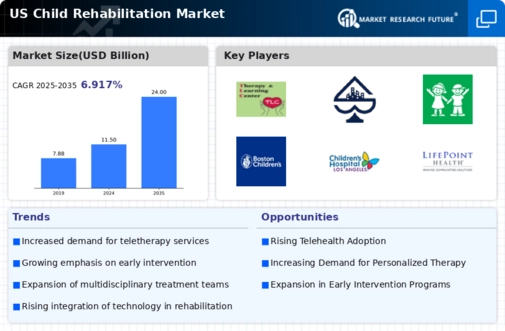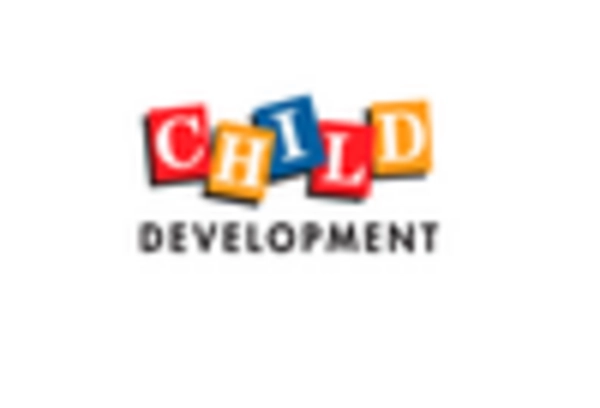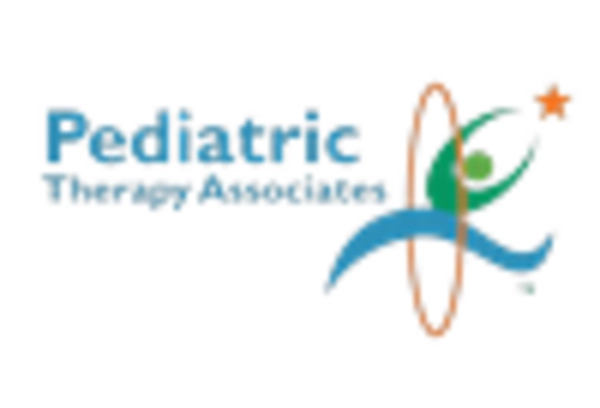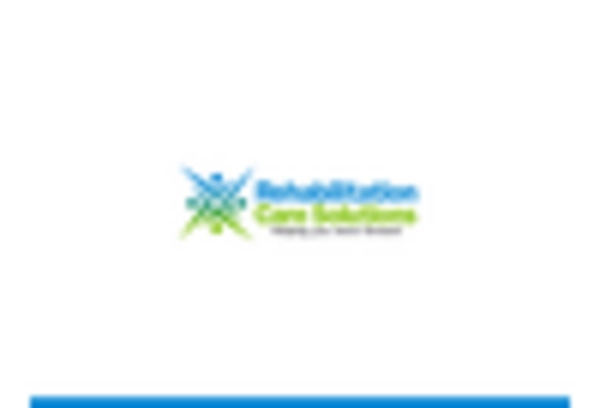Emphasis on Family-Centered Care Models
The child rehabilitation market is increasingly adopting family-centered care models, which prioritize the involvement of families in the rehabilitation process. This approach recognizes that family dynamics play a crucial role in a child's recovery and development. By engaging families, rehabilitation providers can create tailored treatment plans that address the unique needs of each child. This trend is supported by research indicating that family involvement can lead to better therapeutic outcomes. As more rehabilitation centers implement family-centered practices, the child rehabilitation market is likely to see enhanced satisfaction rates among families and improved adherence to treatment plans. This shift towards inclusivity and collaboration may ultimately drive growth in the market, as families seek services that align with their values and needs.
Increased Government Funding and Support
Government initiatives aimed at improving child health and welfare are significantly impacting the child rehabilitation market. Recent policy changes have led to increased funding for rehabilitation services, particularly for children with disabilities. This financial support is crucial for enhancing service availability and quality, allowing more families to access necessary therapies. The child rehabilitation market benefits from various federal and state programs that promote early intervention and comprehensive care. As funding continues to grow, it is expected that more rehabilitation centers will emerge, further diversifying the services offered. This trend indicates a robust commitment to addressing the needs of children requiring rehabilitation, ultimately fostering a more inclusive environment for their development.
Growing Awareness of Mental Health Issues
The rising awareness of mental health issues among children is becoming a significant driver in the child rehabilitation market. Parents and educators are increasingly recognizing the importance of mental well-being, leading to a greater demand for psychological and emotional support services. This shift in perception is prompting rehabilitation providers to incorporate mental health services into their offerings, creating a more holistic approach to child rehabilitation. The market is likely to see an increase in programs that address both physical and mental health needs, reflecting a comprehensive understanding of child development. As mental health continues to gain prominence, the child rehabilitation market is expected to adapt and expand, ensuring that children receive the support they require for overall well-being.
Rising Prevalence of Developmental Disorders
The increasing incidence of developmental disorders among children is a primary driver in the child rehabilitation market. Recent statistics indicate that approximately 1 in 6 children in the US has a developmental disability, which necessitates specialized rehabilitation services. This trend is likely to escalate demand for tailored therapeutic interventions, as parents and healthcare providers seek effective solutions. The child rehabilitation market is adapting to this growing need by expanding service offerings and enhancing accessibility. As awareness of developmental disorders rises, so does the urgency for early diagnosis and intervention, which could potentially lead to improved long-term outcomes for affected children. Consequently, the child rehabilitation market is positioned to experience significant growth as it responds to these evolving healthcare demands.
Technological Advancements in Rehabilitation Tools
Technological innovations are transforming the child rehabilitation market, providing new tools and methodologies for effective treatment. The integration of advanced technologies, such as virtual reality and robotics, enhances the rehabilitation experience for children, making it more engaging and effective. For instance, the use of gamified therapy applications has shown promising results in improving motor skills and cognitive functions. The market is witnessing a surge in investment in research and development, with projections indicating a potential increase in market value by over 20% in the next five years. These advancements not only improve therapeutic outcomes but also attract a broader demographic of families seeking innovative rehabilitation solutions for their children. As technology continues to evolve, the child rehabilitation market is likely to expand its reach and efficacy.

















Leave a Comment